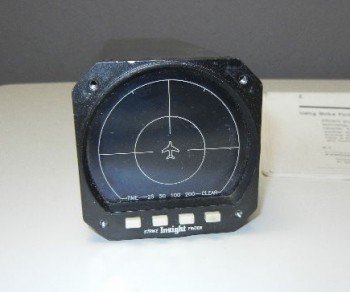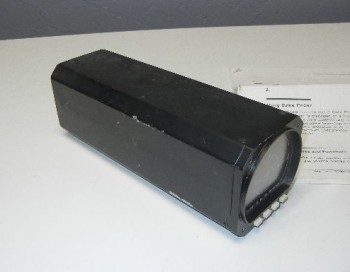After reviewing my intended mission profile and realizing that using the Long-EZ’s range in traversing the US–meaning midwest thunderstorms–as well as flying up and down the mid-Atlantic region with its inherent summer thunderstorms, for safety and increased comfort factor I wanted some form of real-time lightning detection capability… above and beyond NEXRAD weather. I researched out the various lightning detection systems, and decided that I would like to install either a Stormscope or an Insight Strike Finder.
I found an older Strike Finder on eBay and decided it was worth purchasing. Although it was an older model, I had pre-coordinated with Insight Avionics to check out and upgrade the unit to an Ultra Bright LED display. This upgrade replaces the face of the instrument so that not only is the display much more readable and reliable, but the the entire instrument face is brand new.
I was able to buy both the control head and the sensor unit (antenna) as well. I shipped the control head and sensor off to Insight where they provided a sensor cable, and checked out the unit. After the control head & sensor units checked out fine, the Insight techs upgraded the display to the Ultra Bright LED.
Here’s the actual unit (before upgrade) shown below:
Here’s a description of Strike Finder’s capabilities from the Aircraft Spruce site:
The STRIKE FINDER® Digital Weather Avoidance System detects and analyzes the electrical activity emanating from thunderstorms within a 200 nautical mile (nm) radius of the aircraft. A unique graphic display plots an accurate, reliable and easily-interpreted picture of electrical activity that you can use to circumnavigate the hazards associated with thunderstorms.
The STRIKE FINDER® System analyzes the individual strike signal properties to determine the bearing, range and severity of the activity. Strike data is plotted on the display as single orange dots by range and azimuth, in relation to the aircraft symbol (“heads up”). As the number of lightning strikes increase, so does the number of plotted strike dots. Cells start to form indicating increased lightning activity.




